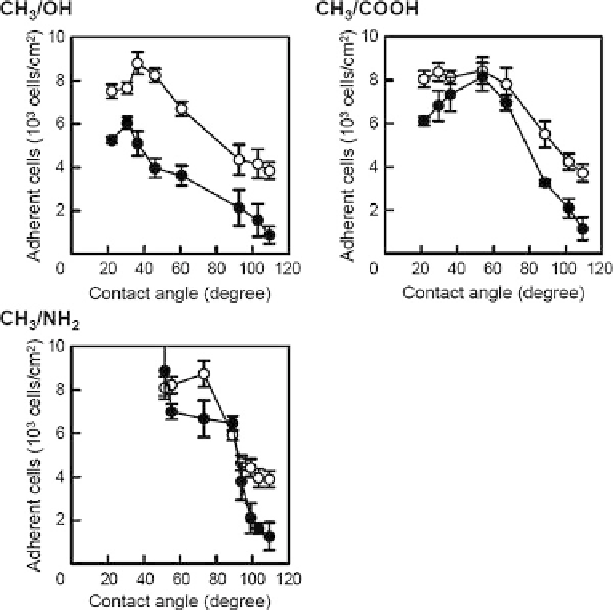Biomedical Engineering Reference
In-Depth Information
Fig. 3 Relationship between water contact angles on mixed SAMs and the number of adherent
cells. HUVECs (
open circles
) and HeLa cells (
filled circles
) were allowed to adhere for 1 h. The
averages (
SEM) of five experiments are shown [
21
]
angle, the evanescent wave of the incoming light is able to couple with the free
oscillating electrons (plasmons) in the metal film, and surface plasmon resonance
occurs. This resonance causes an energy transfer from the incident light to the
plasmons of the metal film, which reduces the intensity of the reflected light (black
line in Fig.
4b
). Another important point in SPR is that the resonance angle is
affected by the refractive index in the vicinity of the metal film (within ~200 nm
from the metal surface). Thus, a shift in resonance angle reflects events at the
interface, like protein adsorption on the surface. The resonance angle shift (
D
y
)
after protein adsorption is related to the amount of adsorbed protein by the Fresnel
relationship [
67
,
68
]. This equation assumes five layers (glass/Au/SAM/protein/
water); the refractive index and the density of the protein layer are usually taken as
1.45 and 1 g/cm
3
, respectively. For real-time analysis, the change in reflectance
(
DR
) is tracked at a fixed incident angle (usually 0.5
lower than the
resonance angle) during a measurement, and then it is numerically converted to
the resonance angle shift.

